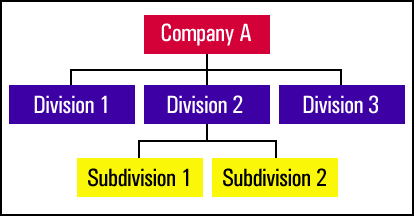Proper partition planning
can keep your NetWare network running smoothly
Do you work for a medium- to large-size organization with multiple locations?
If so, partitioning your NDS database can help improve network efficiency and
fault tolerance, as well as provide support for bindery servers that need access
to NDS information.
Let's start with the facts
A partition is a logical boundary placed around a container and all its objects.
The topmost container is called the partition root, and it is used to name the
partition. All NDS objects, including containers, can exist in only one
partition.
Let's say that the example shown in Listing A represents a single partition. The
partition root will be Company A, and all of the containers and their leaf
objects will be in the Company A partition.
Listing A

A parent/child relationship exists among partitions. A partition that exists
directly above another partition is considered the parent, while the lower
partition is considered the child. Using the example above, let's say that each
box is a separate partition. Company A is the parent partition for Division 1,
Division 2, and Division 3. The parent partition for Subdivision 1 and
Subdivision 2 is Division 2. However, Subdivision 1 and Subdivision 2 have no
relationship to Company A. Grandparent relationships do not exist among
partitions.

Managing partitions
Now that we understand a little bit about partitions, let's see how easy it is
to create them using NDS Manager. Simply highlight the container that will
become the partition root, right-click on it, and select Create Partition. The
green partition symbol will appear next to the container, indicating that a
partition boundary exists around the container and everything below it except
other partitions. Yes, it really is that easy.
NDS Manager also lets us merge a child with its parent. Again, this is
relatively easy to do. Just highlight the child, right-click on it, and select
Merge. The green partition symbol next to the child will disappear, and the
container will become part of the parent partition.
You might be asking yourself how something so easy has a significant impact on
your network. Consider the organization chart in Listing A. Let's say that
Division 1, Division 2, and Division 3 represent three geographic locations.
Each division has its own NetWare server, and the servers are all connected
using 256-Kbps connections. Because we are good network administrators, we have
created a partition for each division and placed a copy of it onto the local
NetWare server.
Our customers will probably be very pleased with this network design. They will
authenticate to the local server, which will be much faster than authenticating
over a 256-Kbps connection. All NDS transactions will be made to the local
partition, which prevents them from eating up valuable bandwidth. Since we have
a relatively slow WAN link, it is imperative to keep network traffic to a
minimum and allow important business transactions to utilize the bandwidth we
have.
Finally, if the Division 2 server crashes, the other two divisions will be
unaffected and can continue working. Management will love you for this.
Don't span the WAN
As we have seen, partitioning will create logical divisions of the NDS database
that will increase the efficiency of NDS and provide fault tolerance. Always
remember this basic rule about partitions: don't span the WAN.

